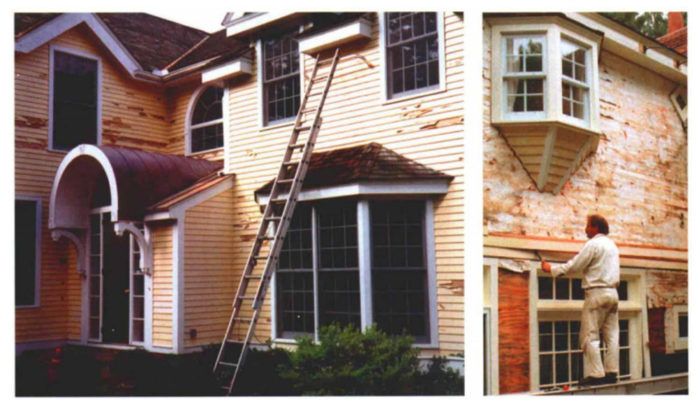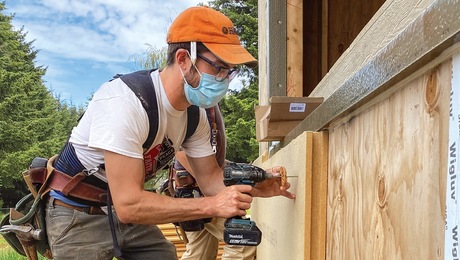Rain-Screen Walls: a Better Way to Install Siding
Spacing the siding away from the housewrap promotes ventilation and drainage for long-lasting siding and paint.

Synopsis: A description of how to build a rain-screen wall, a method of holding siding slightly away from the side of the house to promote air circulation while allowing both siding and paint to last longer.
I sensed trouble as soon as I saw the house. I was there to bid on painting the eight-year-old, multimillion-dollar home. What first struck me was the sheets of paint dangling from the cedar siding. Even more alarming, the paint peeling from the walls was from the house’s third paint job.
When I learned that the previous paint job was done only two years before, I knew that the problem ran deeper than the paint. Jittery about hiring yet another painter, the homeowners agreed when I suggested calling in a consultant, Joseph Lstiburek.
When Joe saw the house about a week later, he said, “I’ll tell you in two minutes what’s wrong if we can pull one clapboard.” Pulling off one clapboard revealed tea-colored Tyvek housewrap, soaked like blotter paper. Both the clapboards and the plywood sheathing were saturated. I was stunned.
Joe and I checked for possible moisture sources, from the attic to the basement. There was no evidence of any interior moisture source that could account for the damage and peeling paint. Furthermore, we found no flashing deficiencies that could lead rainwater behind the housewrap. The pattern of wetting, coupled with the lack of any interior moisture source, indicated the source of moisture to be rain that found its way past the siding and the housewrap.
None of this surprised Joe, who explained to me the science behind the failure and the reason why the one sure way to correct it was to build a rain-screen wall.
The key is to isolate the housewrap or tar paper from the siding
Rain-screen walls have an airspace between the siding and the building paper or housewrap. (Installed behind a rain screen, plastic housewraps can work. I prefer #15 tar paper because of its century-old track record. Either one makes up what is called the drainage plane). This airspace is created by applying vertical furring strips over the drainage-plane material. The siding, typically clapboards, is nailed to these strips.
The airspace does several duties. First, it spaces the siding away from the drainage plane, minimizing any chance of extractive bleed. Back-priming the siding would do the same thing, and it is a good practice. But it does nothing to address capillary action. As demonstrated by the grade-school experiment of putting a stalk of celery into a glass of colored water, capillary action can draw water upward along a continuous surface. Water can move long distances in this way, so a raindrop climbing the back of one clapboard to the top of another, then to the wall sheathing, is not an imaginary event.
The airspace in a rain-screen wall provides a capillary break, stopping water driven behind the siding by capillary action from ever reaching the drainage plane. Vented top and bottom, the siding has a way to dry from the water that gets behind it. Finally, this vented airspace helps to equalize the air pressure on each side of the siding, reducing the chance of wind-driven rain being forced or drawn behind the siding.
For more photos and details on rain-screen walls, click the View PDF button below.
Fine Homebuilding Recommended Products
Fine Homebuilding receives a commission for items purchased through links on this site, including Amazon Associates and other affiliate advertising programs.

Smart String Line

Plate Level

100-ft. Tape Measure

























